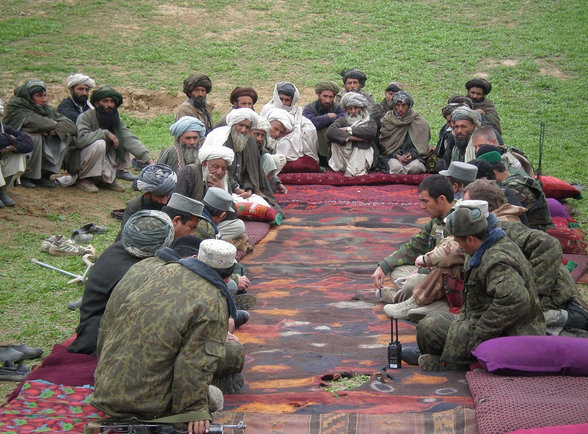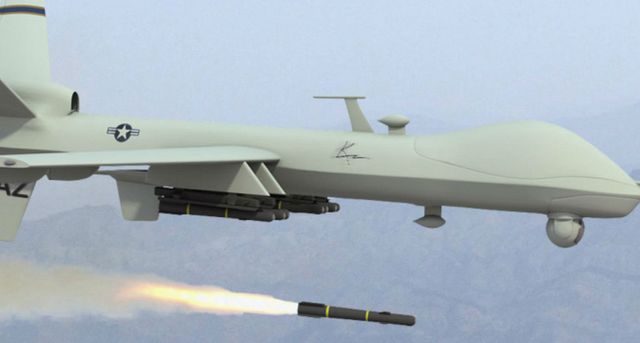Post 9/11 Strategic Communication in Pakistan - Evolving US PSYOPS

In continuing this series on PSYOPS and Information Operations using both State and non-State actors as examples, I will now examine another pertinent and contemporary example which will utilize some of the concept and methodologies expressed by academic war scholars like P. Christopher and Dennis Murphy, among others. The underlying factor in my analysis and example is to portray Strategic Communication as a viable tool for both war doctrine and practice, in an effort to supersede physical war, resulting in more of a concentrated effort towards MindWar concepts as advocated by Dr. Aquino.
The Strategic Communication (SC) narrative of the WoT in Pakistan appears to be controlled by the Taliban. Taliban propaganda and lack of U.S. SC in Pakistan have both contributed to a very low U.S. approval rating by the Pakistan population. Taliban radio stations and distributed propaganda claimed the “U.S. was occupying Pakistan” (Ahmad, 2017). The U.S. has not effectively countered Taliban propaganda. The U.S. provided $107.4 million in aid (plus operations) to Pakistan following the 2010 monsoon flooding, but in 2011 the U.S. favorable opinion by the population was only 11 percent, and unfavorable was 75 percent. U.S. Public Diplomacy has been unable to leverage aid (Clough, 2014, 56) the popular Army Chinook toy being an exception (Paul, 2008, 113).

U.S. drone strikes in Pakistan have also contributed to the low U.S. favor-ability – they are a strong communication medium. Strikes (from 2004-2013) in Pakistan have reportedly killed 411-890 civilians (including 168-197 children), damaged relations between civilians and the Pakistani Government, increased militant recruitment, increased civilian support for militants, and motivated attacks in Pakistan (Luhan, 2015, Chapter 1). Pakistanis tend to place more significance on family and community than on many aspects of self. Pakistani’s view drone warfare as “dishonorable and cruel” (Luhan, 2015, Chapter 2). Many of the casualties were to deeply connected Pashtun tribal members, who are very prone to revenge. Each Pashtun killed in a strike may have created several new revenging militants.
The Pakistan government perceives that “...the U.S. has not been a reliable ally...” (Hussain, 2005, 10) – the relationship has just been transactional in nature. The U.S. has often delivered conflicted messages, sometimes in the same day (through lack of deconfliction, or coordination between different agencies). There is a perception that the U.S. may abandon Pakistan and withdraw from Afghanistan. Pakistan would like a long term U.S. relationship not influenced by U.S. political cycles (Nadim, 2016) (Ahmad, 2017).
The current Pakistan administration has made progress in tribal area security, economic growth and reducing terrorist attacks. Pakistan would like the U.S. relationship to move beyond just security (Ahmad, 2017). A more comprehensive relationship with the world’s only Muslim nuclear state may support integrated information messaging to Pakistan’s population, and to other Muslim states.
The U.S. should implement Paul’s “crawl” level of SC with Pakistan, along with understanding Pakistan’s culture, and better message coordination (Paul, 2011, locations 2154-2256). Measurable objectives should be established to inform, influence and persuade. SC should focus on Pakistani perceptions, since perceptions can trump reality (Paul, 2011, locations 9194). SC effectiveness measures should include 1) regular surveys of the public opinion of the U.S. in Pakistan, 2) the number of (militant activity) tips by local Pakistanis, and 3) what values Pakistanis feel are associated with the U.S.
The regional WoT narrative should be updated – “A stable and secure Afghanistan is needed in order for Pakistan to prosper”. Militants are a large part of the problem. They can never bring peace, just prolong war. The Taliban narrative should be subverted “U.S. is occupying Pakistan” to “U.S. is protecting you from the Taliban”, supported with a PSYOP campaign.
Actions, such as aid or drone strikes, should be aligned with messages. An evaluation of second order effects should be made before all drone strikes – a drone strike can cost up to a half million US dollars, information content should be a force multiplier, not detractor. Pakistan should approve and provide messaging around drone strikes in Pakistan. Messages should include what the strikes accomplished. A joint message should admit any mistakes immediately (Murphy, 2010). Humanitarian aid should be a government/industry partnership, with joint/crossover branding that promotes U.S. values (Disney themed blankets?). All aid should be branded. Even without acknowledged U.S. aid, the population will identify more with the U.S.
References:
Ahmad, H.E. Aizaz (May 22, 2017). Presentation U.S.Pakistan Relations: Challenges and Opportunities in an Age of Change. Baker Institute. http://www.bakerinstitute.org/events/1873/.
Clough, Brian; Morrison, Andrew; and Woodworth, Marc (2014). Intent and Resolve: Strategic Communications in Support of USPACOM Foreign Humanitarian Assistance Operations. Foreign Area Officers Association.
http://www.faoa.org/Resources/Documents/Clough%20et%20al.pdf
Hussain, Touqir (Aug 2005). U.S.Pakistan Engagement: The War on Terrorism and Beyond. Washington, DC: United States Institute of Peace. www.usip.org.
Luhan, Vijay (May 16, 2015). “The New Guantanamo”: The Psychological Impact of US Drone Strikes in Pakistan. EInternational Relations. http://www.eir.info/2015/05/16/thenewguantanamothepsychologicalimpactofusdronestrikes
inpakistan/.
Murphy, Dennis M. 2010. " Strategic Communication: Wielding the Information Instrument of Power." In U.S. Army College Guide to National Security Issues, Volume I: Theory of War and Strategy. 4th ed. Edited by J. Boone Bartholomees, Jr. Carlisle Barracks, PA.: US Army War College, Strategic Studies Institute. pp. 175187
Nadim, Hussain (Pakistan Ambassador to the U.S.) (Oct 25, 2016). How to Save U.S. Pakistan Relations from the Brink of Disaster. The National Interest. http://nationalinterest.org/feature/howsaveuspakistanrelationsthebrinkdisaster
18179?page=show.
Paul, Christopher. 2008. Information Operations: Doctrine and Practice. Westport, CT: Praeger. Chapter 5.
Paul, Christopher. 2011. Strategic Communication. Westport, CT: Praeger. Kindle Edition. pp. 1168.
Image Credit: cgpolicy.org: How will Afghan, US leaders respond to deadly Taliban attack?
Image Credit: sputniknews.com: US to Deploy Newest Missile Attack Drones in South Korea
Congratulations @fugetaboutit! You have completed some achievement on Steemit and have been rewarded with new badge(s) :
Click on any badge to view your own Board of Honor on SteemitBoard.
For more information about SteemitBoard, click here
If you no longer want to receive notifications, reply to this comment with the word
STOP